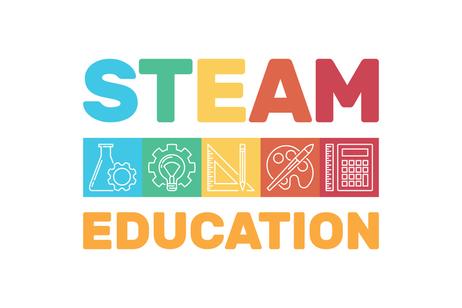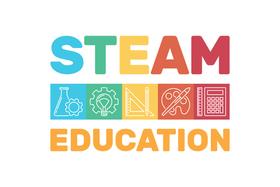As a classically trained musician descended from a long line of engineers, I have experienced the interplay and tension between my passion for music and my appreciation of how things work. When I studied trigonometry and Latin in high school, I never realized that STEM subjects would become a critical component of 21st-century primary and secondary education. Neither did I understand how the arts enriched my perspective on just about everything.
In today's rapidly changing world, we must prepare students for the challenges and opportunities that lie ahead. The focus on STEM has morphed into integrating arts subjects with STEM, creating the aggregation of disciplines we call STEAM. A STEAM education integrates science, technology, engineering, arts, and mathematics in a comprehensive and cohesive learning environment. Most private K-12 schools are well-equipped to teach the benefits of a STEAM education, thus providing their students with a strong foundation for future success in their life and work as adults.
In the explanation of STEAM and the subjects that comprise STEAM that follows, I have included quotations from various sites devoted to STEAM, so that you can explore the approach in detail.
The Interdisciplinary Approach of STEAM
The concept behind STEAM education is the idea that these five disciplines are interconnected and that we should adopt an integrated approach to teaching the various components. Combining subjects such as science, technology, engineering, arts, and mathematics, helps students develop a deeper understanding of how concepts and principles are applied across different fields. Thus, we encourage students to think critically, make connections, and develop innovative solutions to complex problems.
This TEDx Talk posits that a STEAM education is essential for social transformation.
STEAM
The STEAM framework encompasses a range of subjects, each playing a vital role in the learning process:
Science
Biology, chemistry, physics, and other scientific disciplines form the foundation of STEAM education. The natural world, scientific principles, and the methods used to explore and understand the universe comprise the science component of most STEAM curricula.
Exploring the many fascinating topics involved in science, from astronomy to zoology, fosters children’s curiosity about the world around them. Source: National Inventors Hall of Fame
Technology
Computer science, programming, digital tools, and AI are essential components of STEAM education. Students develop skills in coding, software development, and data analysis, preparing them for a digitally driven world.
Technology in STEAM education is of particular importance as a basic understanding of technology is now required for almost any kind of work. The idea behind STEAM education is to place a focus on the areas of science, technology, engineering, the arts, and mathematics, emphasizing their importance for developing transferable skills and highlighting their value within the workforce. In today’s world, the field of technology is vital because it is all around us, assisting our everyday lives, driving entire industries, and keeping us connected. Source: Viewsonic
Engineering
Engineering is in my DNA, so I am delighted to see these subjects included in the STEAM curriculum. Students learn design, problem-solving, and innovation. They also learn to apply scientific principles to real-world problems, developing solutions that are both practical and effective.
Engineering, the all-important “E” in STEM and STEAM education – in this new age of technology, a robust engineering curriculum is more essential than ever. At Stratford School, our engineering curriculum is designed to prepare our students to meet the unique challenges of the future armed with a solid engineering foundation from which they can build upon, whether they choose to continue their studies in any of the many engineering specialties that exist today or use those critical engineering principles to solve complex problems and improve systems in any field they decide to pursue. Source: Stratford School
Arts
By encouraging creativity, imagination, and self-expression, arts subjects allow students to explore the visual and perfomring arts.thereby developing the ability to think creatively and solve problems from a different perspective.
The “A” in STEAM is a term that represents liberal arts, language arts, social studies, physical arts, fine arts, and music. STEAM education is about applying creative thinking to STEM projects, igniting students’ imagination and creativity through the arts. Source: MakeBlock
Mathematics
Mathematics is the language of STEAM, providing the tools and frameworks necessary for problem-solving and critical thinking. Developing skills in algebra, geometry, calculus, and other branches of mathematics, enables students to analyze data, model systems, and make informed decisions.
Now that you have an overview of the five disciplines of STEAM, you can understand why these subjects should not be taught in silos, but integrated with each other so that students can understand how they all fit together and work in tandem. The synergies that result from integrating them are invaluable for young minds.
There's a marvelous example of such synergies from the Renaissance period in classical music. On March 25, 1436, the Pope dedicated the Cathedral in Florence, Italy. The most striking feature of that magnificent Cathedral is its dome, designed by the Italian architect Filippo Brunelleschi. One of the pieces of music sung at the dedication service was Nuper rosarum flores by Guillaume Dufay. This composition is remarkable because its musical structure mirrors the structure of Brunelleschi's great dome. You can read the story behind Brunelleschi's Dome and Dufay's Motet in a paper by Charles W. Warren. So, STEAM is not a new concept, but rather something that has been part of civilized thinking since the Middle Ages, and perhaps earlier.
This video illustrates the story behind Brunelleschi's Dome and Dufay's Motet .
Advanced Placement and International Baccalaureate Courses
In an attempt to make STEAM accessible to your children, I want you to know that many private schools offer Advanced Placement (AP) and International Baccalaureate (IB) courses that incorporate STEAM principles. These courses provide students with a challenging and engaging learning environment, preparing them for the rigors of higher education and the demands of the modern workforce.
Look for STEAM-focused AP and IB courses such as the following in the curricula of the schools you are considering.
- AP Computer Science
- AP Calculus
- IB Design Technology
- IB Computer Science
- AP Art History
- AP Music Theory
Conclusion
In conclusion, STEAM education in private K-12 schools offers a powerful approach to learning, preparing students for success in our complex and interconnected world. The STEAM approach teaches students to develop a deep understanding of the world and its complexities, as well as the skills and knowledge necessary to thrive in emerging fields. As the world continues to evolve, it is essential that education evolves with it, providing students with the tools and frameworks necessary to drive innovation and progress.
Questions? Contact us on Facebook. @privateschoolreview
#STEAMeducation #PrivateK12Schools #FutureReady #InterdisciplinaryLearning #Innovation #Creativity #CriticalThinking














